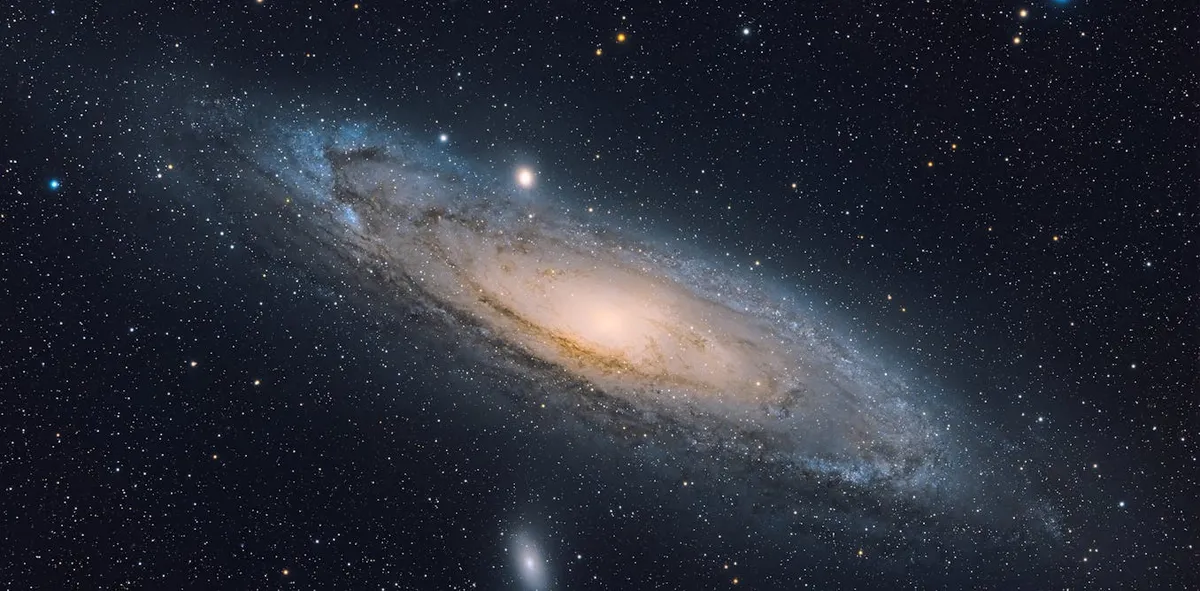
For years, astronomers have predicted a dramatic fate for our galaxy: a head-on collision with Andromeda, our nearest large galactic neighbor. This anticipated merger, projected to occur in about 5 billion years, has become a staple of astronomy documentaries, textbooks, and popular science writing. However, a new study published in Nature Astronomy, led by Till Sawala from the University of Helsinki, suggests that the Milky Way’s future may not be as certain as previously assumed.
By carefully accounting for uncertainties in existing measurements and including the gravitational influence of other nearby galaxies, the study reveals that there is only about a 50% chance that the Milky Way and Andromeda will merge within the next 10 billion years. This finding challenges the long-held belief that a collision between these two galaxies is inevitable.
The idea that the Milky Way and Andromeda are on a collision course dates back over a century. Astronomers discovered that Andromeda is moving toward us by measuring its radial velocity—its motion along our line of sight—using a phenomenon known as the Doppler shift, which causes a slight change in the color of its light. However, galaxies also exhibit sideways motion across the sky, known as proper motion or transverse velocity. This sideways motion is challenging to detect, especially for galaxies that are millions of light-years away.
Earlier studies often assumed that Andromeda’s transverse motion was small, making a future head-on collision appear almost certain. But this assumption has been re-evaluated in the latest research.
Unlike previous studies, this new research did not rely on new data. Instead, it provided a fresh perspective on existing observations from the Hubble Space Telescope and the Gaia mission. By incorporating measurement uncertainties rather than assuming the most likely values, the researchers simulated thousands of possible trajectories for both the Milky Way and Andromeda. This approach allowed them to explore a broader range of possibilities.
Initially, when the study used the same assumptions as previous research, it yielded similar results. However, it also enabled the exploration of a wider array of potential outcomes. Furthermore, the study considered the gravitational influences of two additional galaxies: the Large Magellanic Cloud, a massive satellite galaxy currently falling into the Milky Way, and M33 (also known as the Triangulum Galaxy), which orbits Andromeda. These companion galaxies exert gravitational forces that can alter the trajectories of their host galaxies.
M33 nudges Andromeda slightly closer to the Milky Way, thereby increasing the chance of a merger. Conversely, the Large Magellanic Cloud pushes the Milky Way’s motion away from Andromeda, reducing the likelihood of a collision. Taking all these factors into account, the researchers found that in approximately half of the simulated scenarios, the Milky Way and Andromeda do not merge at all within the next 10 billion years.
Even if a merger does occur, it is unlikely to spell catastrophe for Earth. The vast distances between stars in galaxies mean that direct collisions are rare. Over time, the galaxies would coalesce under the force of gravity, forming a larger, single galaxy—likely an elliptical one rather than the spiral shapes we observe today. If the galaxies don’t merge, they may enter a long, slow orbit around each other, becoming close companions that never quite collide. This gentler outcome still reshapes our understanding of the Milky Way’s distant future.
The most significant remaining uncertainty lies in the transverse velocity of Andromeda. Even minor changes in this sideways motion can drastically affect the potential for a merger versus a near miss. Future measurements will be crucial in refining this value and bringing us closer to a clearer understanding of our galaxy’s future.
While we may not yet have a definitive answer regarding the Milky Way's fate, exploring these possibilities underscores the continual learning process in our understanding of the universe—especially concerning our own galactic neighborhood.